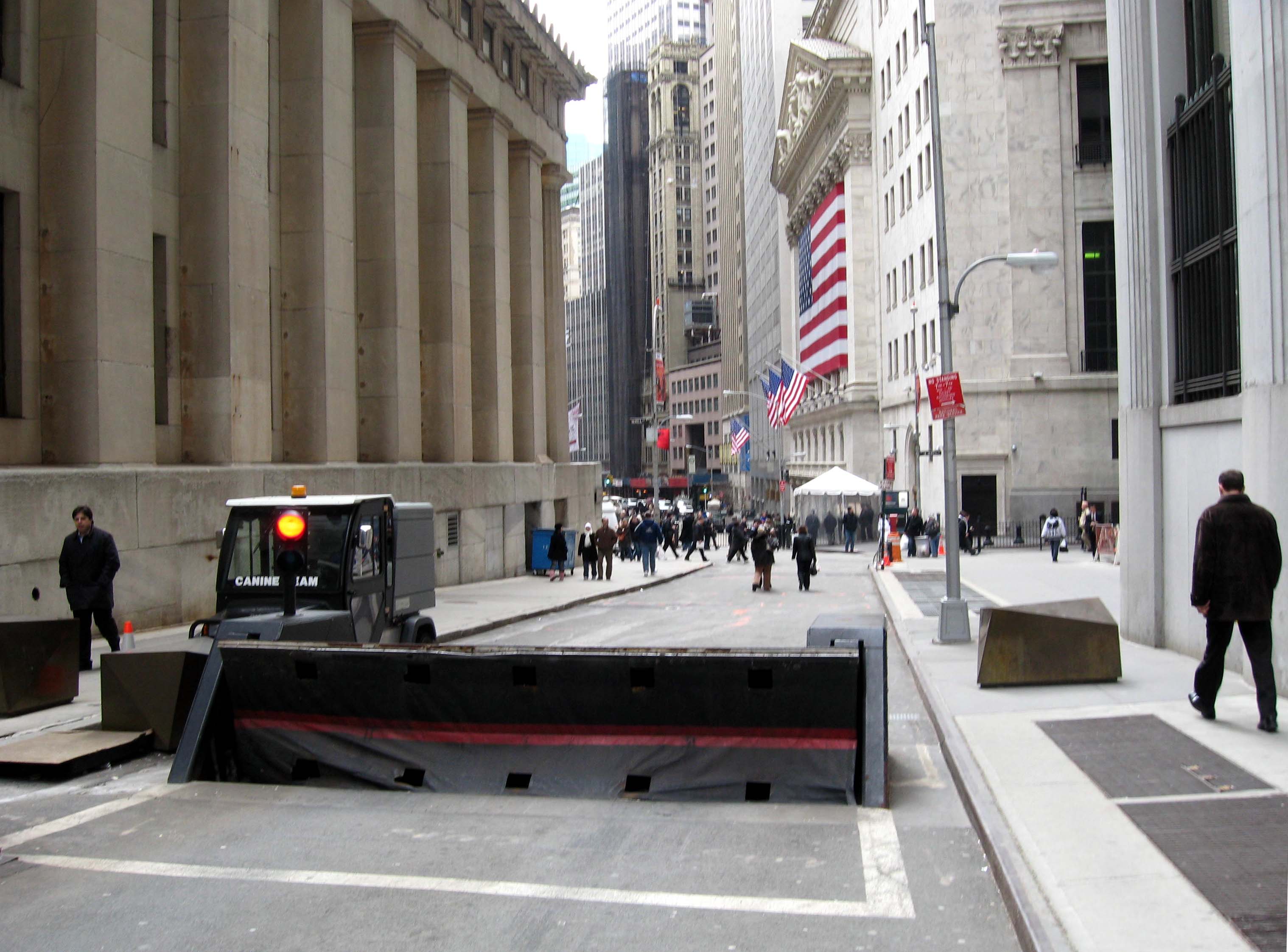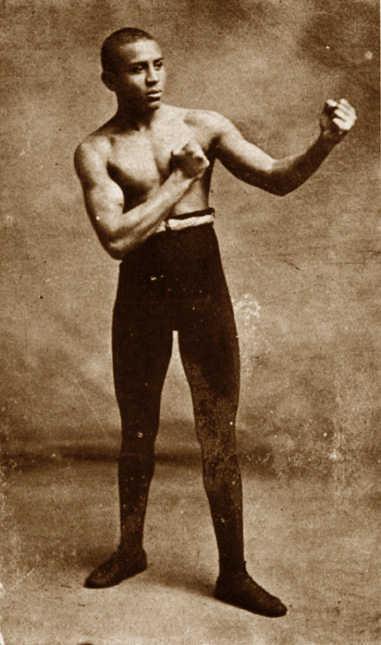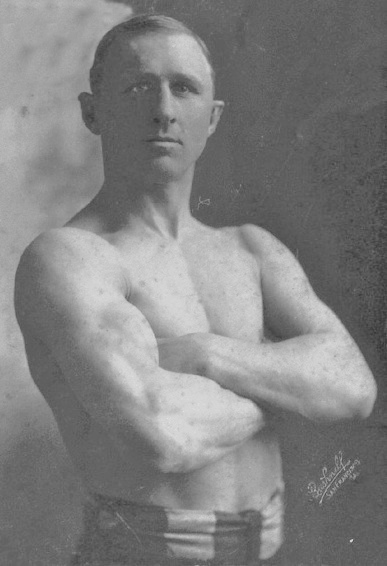|
Leonard-Cushing Fight
The ''Leonard-Cushing Fight'' is an 1894 American short black-and-white silent film produced by William K.L. Dickson, starring Mike Leonard and Jack Cushing. Leonard and Cushing participate in a six round boxing match under special conditions that allow for it to be filmed and displayed on a Kinetograph. The film was shot on an uncertain date between May 24 and June 14, 1984, in an specially configurated ring in Edison's Black Maria film studio in West Orange, New Jersey. Premiered on August 4, 1894 in Manhattan, the movie is the first sports film ever released. As of 2023, no full print of the film is known to have survived, making it a partially lost film. A 23 second fragment is available at the Library of Congress. Plot The boxers Mike Leonard and Jake Cushing participate in a six round exhibition boxing bout. According to Terry Ramsaye, the fighters " ..went six savage, abbreviated rounds of desperate fighting. In the sixth round Cushing, trapped by a feint, dropped his gua ... [...More Info...] [...Related Items...] OR: [Wikipedia] [Google] [Baidu] |
William Kennedy Dickson
William Kennedy Laurie Dickson (3 August 1860 – 28 September 1935) was a British people, British inventor who devised an early motion picture camera under the employment of Thomas Edison. Early life William Kennedy Dickson was born on 3 August 1860 in Le Minihic-sur-Rance, Brittany, France. His mother was Elizabeth Kennedy-Laurie (1823?–1879) who may have been born in Virginia. His father was James Waite Dickson, a Scottish artist, astronomer and linguist. James Dickson claimed direct lineage from the painter William Hogarth, and from Judge John Waite, the man who sentenced Charles I of England, King Charles I to death. Inventor and film innovator At age 19 in 1879, William Dickson wrote a letter to American inventor and entrepreneur Thomas Edison seeking employment. He was turned down. That same year Dickson, his mother, and two sisters moved from Britain to Virginia. In 1883 he was finally hired to work at Edison's laboratory in Menlo Park, New Jersey. In 1888, Ediso ... [...More Info...] [...Related Items...] OR: [Wikipedia] [Google] [Baidu] |
Thomas Edison
Thomas Alva Edison (February 11, 1847October 18, 1931) was an American inventor and businessman. He developed many devices in fields such as electric power generation, mass communication, sound recording, and motion pictures. These inventions, which include the phonograph, the motion picture camera, and early versions of the electric light bulb, have had a widespread impact on the modern industrialized world. He was one of the first inventors to apply the principles of organized science and teamwork to the process of invention, working with many researchers and employees. He established the first industrial research laboratory. Edison was raised in the American Midwest. Early in his career he worked as a telegraph operator, which inspired some of his earliest inventions. In 1876, he established his first laboratory facility in Menlo Park, New Jersey, where many of his early inventions were developed. He later established a botanical laboratory in Fort Myers, Florida, in co ... [...More Info...] [...Related Items...] OR: [Wikipedia] [Google] [Baidu] |
Fulton Street (Brooklyn)
Fulton Street is a long east–west street in northern Brooklyn, New York City. This street begins at the intersection of Adams Street and Joralemon Street in Brooklyn Heights, Brooklyn, Brooklyn Heights, and runs eastward to East New York, Brooklyn, East New York and Cypress Hills, Brooklyn, Cypress Hills. At the border with Queens, Fulton Street becomes 91st Avenue, which ends at 84th Street in Woodhaven, Queens, Woodhaven. The street is street name, named after Robert Fulton; a Fulton Street (Manhattan), street of the same name in Manhattan was linked to this street by Fulton with his steam ferries. For a hundred years before the Fulton Ferry monopoly, Fulton Street was the Ferry Road through Jamaica Pass and, in the centuries before any ferry service, Indian path to the Hempstead Plains. It began at the Fulton Ferry Landing and climbed south through Brooklyn Heights past Brooklyn Borough Hall to where it now begins at Adams Street. Part of the original Fulton Street survive ... [...More Info...] [...Related Items...] OR: [Wikipedia] [Google] [Baidu] |
Bright Lights Film Journal
''Bright Lights Film Journal'' is an online popular-academic film magazine, based in Oakland, California, United States. It is edited and published by Gary Morris. Originally a print publication established in 1974, it was discontinued in 1980 to be restarted and re-discontinued in 1993 and 1995 respectively. The magazine moved to online publishing exclusively in 1996 and has continued publication ever since. It is indexed in academic research databases such as MLA (Modern Language Association) ProQuest ProQuest LLC is an Ann Arbor, Michigan-based global information-content and technology company, founded in 1938 as University Microfilms by Eugene B. Power. ProQuest is known for its applications and information services for libraries, provid ... and the Film & Television Literature Index. [...More Info...] [...Related Items...] OR: [Wikipedia] [Google] [Baidu] |
Nassau Street (Manhattan)
Nassau Street is in the Financial District, within the borough of Manhattan in New York City. Its southern end is at the intersection with Broad Street and Wall Street, and its northern end is at Spruce Street, at Pace University near the foot of the Brooklyn Bridge. For its entire route, Nassau Street runs one block east of Broadway and Park Row. History Nassau Street was originally called Kip Street, after an early Dutch settler family, but was subsequently named in honor of the royal family of the Netherlands, the House of Orange-Nassau. It was named some time before William of Nassau, the Dutch prince who became King William III of England, so that is not the origin of the name, despite how easily it could be mistaken as such. Nassau Street once housed many of the city's newspapers. Late in the 20th century Nassau Street was closed to motor traffic during certain hours, in order to promote shopping. Nassau Street borders on the Fulton-Nassau Historic District, which ... [...More Info...] [...Related Items...] OR: [Wikipedia] [Google] [Baidu] |
Leonard Cushing Kinetograph 1894
Leonard or ''Leo'' is a common English masculine given name and a surname. The given name and surname originate from the Old High German ''Leonhard'' containing the prefix ''levon'' ("lion") from the Greek Λέων ("lion") through the Latin '' Leo,'' and the suffix ''hardu'' ("brave" or "hardy"). The name has come to mean "lion strength", "lion-strong", or "lion-hearted". Leonard was the name of a Saint in the Middle Ages period, known as the patron saint of prisoners. Leonard is also an Irish origin surname, from the Gaelic ''O'Leannain'' also found as O'Leonard, but often was anglicised to just Leonard, consisting of the prefix ''O'' ("descendant of") and the suffix ''Leannan'' ("lover"). The oldest public records of the surname appear in 1272 in Huntingdonshire, England, and in 1479 in Ulm, Germany. Variations The name has variants in other languages: * Leen, Leendert, Lenard (Dutch) * Lehnertz, Lehnert (Luxembourgish) * Len (English) * :hu:Lénárd (Hungarian) * Lenart ( ... [...More Info...] [...Related Items...] OR: [Wikipedia] [Google] [Baidu] |
New York World
The ''New York World'' was a newspaper published in New York City from 1860 until 1931. The paper played a major role in the history of American newspapers. It was a leading national voice of the Democratic Party. From 1883 to 1911 under publisher Joseph Pulitzer, it was a pioneer in yellow journalism, capturing readers' attention with sensation, sports, sex and scandal and pushing its daily circulation to the one-million mark. It was sold in 1930 and merged into the ''New York World-Telegram''. History Early years The ''World'' was formed in 1860. From 1862 to 1876, it was edited by Manton Marble, who was also its proprietor. During the 1864 United States presidential election, the ''World'' was shut down for three days after it published forged documents purportedly from Abraham Lincoln. Marble, disgusted by the defeat of Samuel Tilden in the 1876 presidential election, sold the paper after the election to a group headed by Thomas A. Scott, the president of the Pennsylva ... [...More Info...] [...Related Items...] OR: [Wikipedia] [Google] [Baidu] |
Jack McAuliffe (boxer)
Jack McAuliffe (March 24, 1866 – November 5, 1937) was an Irish-American boxer who fought mostly out of Williamsburg, Brooklyn. Nicknamed "The Napoleon of the Ring," McAuliffe is one of only fifteen world boxing champions to retire without a loss. He was the first boxer to hold the World Lightweight championship from 1886 to 1893. He was the first European boxer to retire as an undefeated World Champion. He was inducted into ''The Ring'' Boxing Hall of Fame in 1954 and the International Boxing Hall of Fame in 1995. Early life McAuliffe's parents were Cornelius McAuliffe and Jane Bailey, who were living at 5 Christ Church Lane, Cork, Ireland (then part of the United Kingdom), at the time of Jack's birth. McAuliffe emigrated to the United States in 1871, where he spent his early years in Bangor, Maine. Amateur and professional career He made his first appearance as an amateur boxer in 1883. He turned professional soon after, fighting Jem Carney 78 rounds to a draw at Re ... [...More Info...] [...Related Items...] OR: [Wikipedia] [Google] [Baidu] |
Young Griffo
Albert Griffiths (1 January 1871 – 10 December 1927), better known as Young Griffo, was a World Featherweight boxing champion from 1890 to 1892, and according to many sources, one of the first boxing world champions in any class. ''Ring'' magazine founder Nat Fleischer rated Griffo as the eighth greatest featherweight of all time.Cyber Boxing Encyclopedia – Young Griffo CyberBoxingZone.com He was inducted into the Ring Magazine Hall of Fame in 1954, the in 1991, and the |
Kid Lavigne
George Henry "Kid" Lavigne (December 6, 1869 – March 9, 1928) was boxing's first widely recognized World Lightweight champion, winning the vacant title on June 1, 1896. Early life He was born in Bay City, Michigan to French-Canadian parents, Jean Baptiste Lavigne and Marie Agnes Dufort, who immigrated to the area from St. Polycarpe, Quebec in 1868. As a youth he worked in his mother's boarding house and later trained as a "cooper" in a sawmill, building barrels to ship salt, a byproduct of many of the mills in the area that sat upon large salt deposits. The "Kid" got the boxing bug from his brother Billy Lavigne who was tutored in the fistic arts by black heavyweight and local barber, C.A.C. Smith. Billy would later become the Kid's manager through various parts of his professional career. Lavigne began his amateur boxing career by taking on the best bare-knuckle fighters of the logging camps. He had his professional debut as a 16-year-old, fighting under the Marquess ... [...More Info...] [...Related Items...] OR: [Wikipedia] [Google] [Baidu] |
Gordon Hendricks
Gordon Hendricks (1917–1980) was an American art and film historian. In 1961 Hendricks published ''The Edison Motion Picture Myth'' in which he showed that it was not Thomas Alva Edison who should be attributed with the invention of the first device for cinema screenings, but in fact William Kennedy Laurie Dickson. The publication of ''Beginnings of the Biograph'' followed shortly after in 1964. In 1966, Hendricks published, ''The Kinetoscope''. These books became milestones in the writing of film history. Hendricks was the first motion picture specialist to lecture in the Sunday series at the Metropolitan Museum of Art. He was the first to show motion pictures in the Great Hall at Cooper Union. In 1975 he authored a work, republished in 2001, about Eadweard Muybridge, in which he called Muybridge the father of the cinema. Hendricks then began a series on books on painters and photographers. He published works about Winslow Homer and Albert Bierstadt. He also published ''T ... [...More Info...] [...Related Items...] OR: [Wikipedia] [Google] [Baidu] |
Enoch J
Enoch () ''Henṓkh''; ar, أَخْنُوخ ', Qur'ān.html"_;"title="ommonly_in_Qur'ān">ommonly_in_Qur'ānic_literature__'_is_a_biblical_figure_and_Patriarchs_(Bible).html" "title="Qur'ānic_literature.html" ;"title="Qur'ān.html" ;"title="ommonly in Qur'ān">ommonly in Qur'ānic literature">Qur'ān.html" ;"title="ommonly in Qur'ān">ommonly in Qur'ānic literature ' is a biblical figure and Patriarchs (Bible)">patriarch prior to Noah's flood, and the son of Jared (biblical figure), Jared and father of Methuselah. He was of the Antediluvian period in the Hebrew Bible. The text of the Book of Genesis says Enoch lived 365 years before he was taken by God. The text reads that Enoch "walked with God: and he was no more; for God took him" (), which is interpreted as Enoch's entering heaven alive in some Jewish and Christian traditions, and interpreted differently in others. Enoch is the subject of many Jewish and Christian traditions. He was considered the author of the Book of ... [...More Info...] [...Related Items...] OR: [Wikipedia] [Google] [Baidu] |







